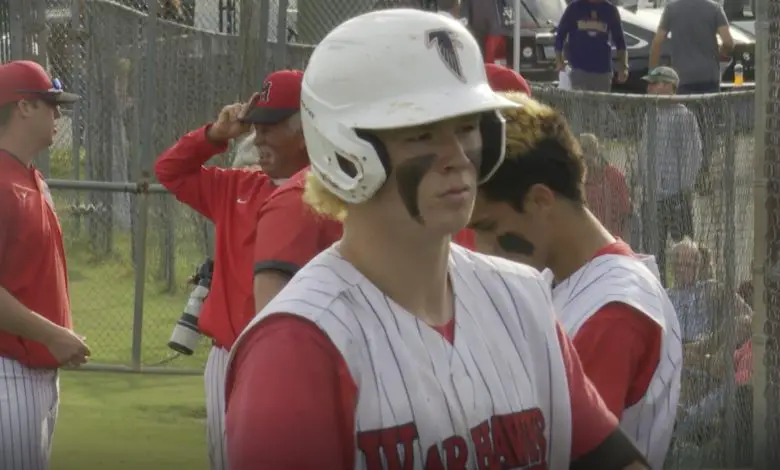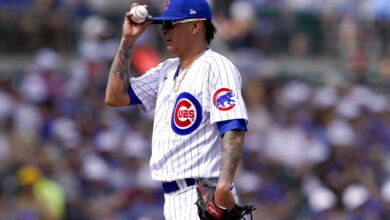
More Evidence That James Triantos Could Be Freaky Good
There’s a great deal of optimism surrounding James Triantos, the Cubs’ second-round pick in the 2021 draft, but it’s been tempered somewhat by healthy skepticism from those who believe his absurd high school numbers were buoyed by weak competition. I don’t care if he was playing JV ball, a .712 batting average with 11 home runs, 27 RBI, and 23 stolen bases is pretty damn good. Oh, he also went 9-0 with a 1.18 ERA and 62 strikeouts to lead the James Madison High School Warhawks to a Class 6 Virginia State Championship.
It’s the baseball equivalent of watching Zion Williamson dunking on kids who went like 5-foot-8 and a buck-fifty, so I understand why people might question what Triantos would do as a pro. Well, all he did in 101 Arizona Complex League at-bats was hit .327 with six homers and a .970 OPS before turning 19 years old. That’s solid, I suppose.
The “more evidence” referenced above isn’t anything new and actually comes from Triantos’s prep days, but it was brought to my attention by a tweet from Bryan Smith of Bleacher Nation and I thought it was worth sharing. The funny thing is that the anecdote in question is buried in the notes on Elijah Green, the No. 8 ranked draft prospect in this summer’s class according to FanGraphs.
Green is a very toolsy center fielder with 70-grade speed and power, though his massive swing-and-miss profile seems like a clear red flag. The report on Green states that he struck out in one-third of his at-bats as a high school junior — an alarming amount for that level — and that he swung and missed more than he put the ball in play. As noted, “several other top high schoolers put two times as many balls in play as they swing and miss.”
Wait, wasn’t this supposed to be about Triantos? Yep, I’m getting to that now, just wanted to let that last bit marinate for a bit.
Implicit in that quoted statement is that not all top prep hitters have such a high ratio of balls in play to whiffs, and that a 2:1 mark is considered excellent. Triantos, however, had a 7:1 ratio his senior season. I’m going to restate that just to make sure we’re on the same page: For every swing and miss, he put seven balls in play. That’s almost batting practice performance, and it’s coming against pitchers who were doing their damndest to get him out.
Look, I totally understand that baseball history is littered with guys like Bubba Starling or Jack Cust who were local folk heroes before they’d graduated high school and who went on to have inconsequential pro careers. Maybe Triantos is another one of those players whose freakish amateur numbers become utterly pedestrian or even disappointing as he ascends through the system.
I don’t think that’s going to be the case, though, and I’ll take it a step further to say Triantos will be a top-100 prospect on a relatively fast track to Chicago before the year is out. The hit tool alone is exceptional enough to make him stand out, then you factor in power that could blossom further as he matures, decent speed, and a solid glove. His position is still something of a question mark, but I would love to see the Cubs give him more time at second base.
The idea of Triantos and Owen Caissie on the right side of the infield in a few years is pretty cool, though I want to make it very clear that I’m not suggesting the Cubs just sit on their asses in the meanwhile.
Update: Triantos hasn’t made a top 100 list, but he did just come in at No. 101 on the new Baseball Prospectus rankings that just dropped. Reginald Preciado is No. 79, Caissie is No. 67, and Brennen Davis is No. 27.

